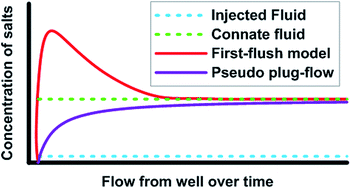Flowback verses first-flush: new information on the geochemistry of produced water from mandatory reporting†
Abstract
Unconventional oil and gas development uses the subsurface injection of large amounts of a variety of industrial chemicals, and there are concerns about the return of these chemical to the surface with water produced with oil and gas from stimulated wells. Produced water, including any flowback of injected fluids, must be managed so as to protect human health and the environment, and understanding the chemistry of produced water from stimulated wells is necessary to ensure the safe management of produced water. In 2014, California instituted mandatory reporting for all well stimulations, including sampling produced water two times and comprehensive chemical characterization of fluids injected and fluids recovered from stimulated wells. In this study, we analyzed data from mandatory reporting with the objective of closing previously identified data gaps concerning oil-field chemical practices and the nature of flowback and produced water from stimulated wells. It was found that the plug-flow conceptual model of flowback developed in shale formations, where salinity increases over time as produced water is extracted, was not appropriate for characterizing produced water from unconventional wells in these oil reservoirs, which are predominately diatomite and sandstones. In these formations stimulation caused a “first-flush” phenomena, where salts and metals were initially high and then decreased in concentration over time, as more produced water was extracted. Although widely applied to meet regulatory requirements, total carbohydrate measurement was not found to be a good chemical indicator of hydraulic fracturing flowback. Mandatory reporting closed data-gaps concerning chemical use, provided new information on acid treatments, and allowed more detailed analysis of hydraulic fracturing practices, including comparison of water use by geological formation.

- This article is part of the themed collection: The environmental geochemistry and biology of hydraulic fracturing


 Please wait while we load your content...
Please wait while we load your content...
